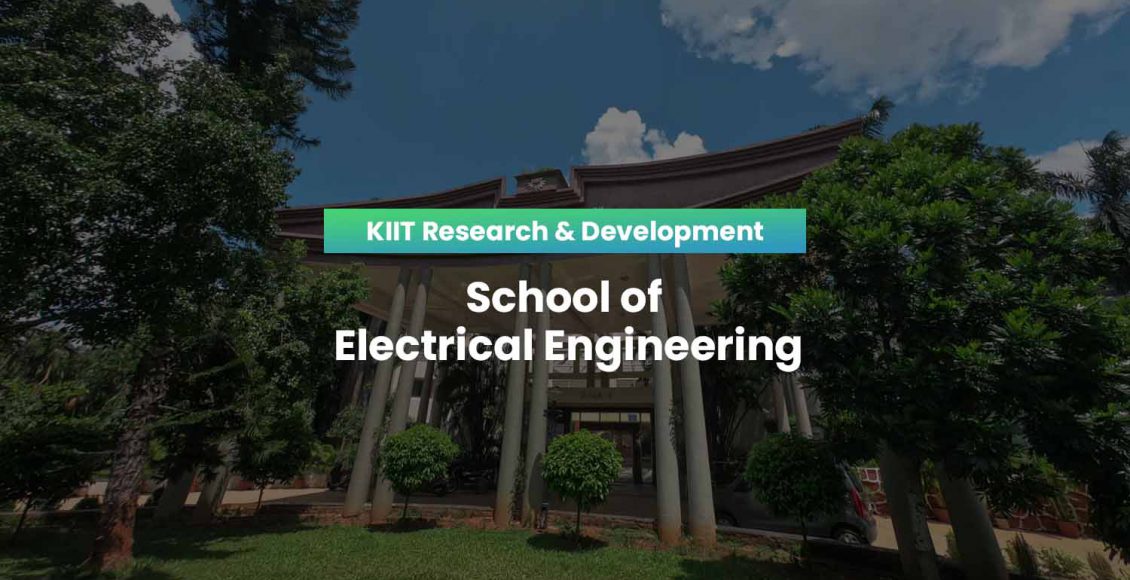School of Electrical Engineering (February 2022)
Journal
1. Sahu,V.S.M, Samal, P., and Panigrahi, C.K. (2021), Modelling, and Control Techniques of Robotic Manipulators: A Review, Materials Today: Proceedings. https://doi.org/10.1016/j.matpr.2021.10.009. (Online)
Abstract
This paper provides a comprehensive review of modelling and control techniques of different types of manipulators such as Single Link Manipulator, Single-Link flexible Manipulator , and manipulator with double link. Furthermore, this review discusses the merits and demerits of different manipulator models and their control methodologies. Moreover, the utilization of the several optimization algorithms, namely Differential Evolution, Cuckoo Search, the Bat Algorithm, the Particle Swarm Optimization, the Ant Colony Algorithm, and so on in controlling the position, velocity, and vibration of the manipulators are explored in this paper.
Conference Papers
1. Singh, N., Jena, S., and Panigrahi, C. K., (2021) Sliding Mode Controlled IDBHCC for Single Phase LC Filter PWM Inverter, International Conference in Advances in Power, Signal, and Information Technology (APSIT), pp. 1–5, Bhubaneswar, India, doi:10.1109/APSIT52773.2021.9641402.
Abstract
This paper describes a detailed model of nonlinear current control techniques. It mainly concentrates on Double Band Hysteresis Current controller (DBHCC) and an improved version of it called IDBHCC for one phase Grid Connected Voltage Source Inverter .LC filter has been used in the inverter to eliminate grid current error. In combination with DBHCC and IDBHCC, Sliding Mode Control has been used to generate inverter pulses. The results are verified through MATLAB simulation.
2. Jena, S., Naik, A. K., Singh, N., Senapati, S., Sahu, P. K., and Panigrahi, C. K. (2021), Performance Analysis of Single-Phase Grid Interactive Voltage Source Inverter Using Different Filters, International Conference in Advances in Power, Signal, and Information Technology (APSIT), Bhubaneswar, India pp. 1–5, doi: 10.1109/APSIT52773.2021.9641384.
Abstract
In the current scenario, to meet the increased load demand, the penetration of renewable energy sources to the existing grid has increased. Most of the renewable sources are interconnected to the grid through pulse width modulated (PWM) voltage source inverter as their output is intermittent in nature. These PWM inverter injects harmonics to the system which should be filtered out before synchronization, according to grid code compliance. In most of the cases a simple L filter or a LCL filter is used to suppress the harmonics. In this paper a LLCL filter is used which can suppress the current ripple at switching frequency. The system is simulated in the MATLAB-Simulink environment and the performance of different filters are analysed.
3. Mohanty, S., Samal, P., Patel, R., Behera, S., Mishra,S.,and Alam, M. A., (2021) Impact of Simultaneous Allocation of Distributed Generation and UPFC in the Transmission Networks, Asian Conference on Innovation in Technology (ASIANCON), pp. 1–6, Pune, India.
Abstract
FACTS devices are power electronic devices that are integrated in the transmission networks to increase power transfer capability, the stability and controllability of the transmission network. In this paper optimal placement of Distributed Generation (DG) and FACTS devices such as UPFC is done in the transmission network to control the power flow, reduce the losses and enhance stability of the system. Mi Power 9.0 software is used to do the load flow analysis. Newton Raphson’s method is used to do power flow analysis of IEEE 3-bus system and IEEE 14-bus system. The integration of FACT devices and DG shows better result in terms of improvement of voltage profile, reduction of active and reactive power flow and line losses.
4. Nanda, L., Mohapatra, S., Pradhan, A., and Prusty, S. R.(2021),Hybrid Symmetrical Cascaded Multilevel Inverter Having Reduced Number of Switches and DC Sources,2nd International Conference for Emerging Technology (INCET),India, pp. 1–5, doi: 10.1109/INCET51464.2021.9456447.
Abstract
In multilevel inverter, a series of several power switches with many low voltage dc sources are utilized to synthesize a staircase voltage waveform. Multilevel converters have several advantages over traditional multilevel inverters. In this paper a new modified topology along with its cascaded connection is proposed. This paper also presentsits symmetrical and asymmetrical configurations of the topology along with their voltage THDs and current THDs. Itsperformance has been analyzed at different values of modulation index. Finally, simulations are carried out in MATLAB 18b platform.
5. Nanda,L., Jena, C., and Samal,S. (2021) Symmetrical and Asymmetrical Conventional Cascaded Multilevel Inverter with SPWM Technique, International Conference on Intelligent Technologies (CONIT), 2021, India, pp. 1–5, doi: 10.1109/CONIT51480.2021.9498417.
Abstract
The classical topologies do solve the challenges encountered with two-level conventional inverter. As the output voltage level increases, the AC output waveform becomes better with less Total Harmonic Distortion. However, cascaded multilevel inverter, among all the classical topologies, is preferred due to its simple modularity and absence of diodes and capacitors. CHB generates a good sinusoidal output waveform with little total harmonic distortion.


